AC Flashover Performance of 10 kV Rod-Plane Air-Gapped Arresters under Rain Conditions
Abstract
:1. Introduction
- Firstly, the test facilities, specimens and procedures are introduced, compared with the existing work, the rain flashover characteristics of the air gapped arresters are studied, whose structure and flashover process is more complicated than the air gaps and insulators in the existing papers.
- Secondly, the flashover characteristics of the test specimens are obtained and analyzed. The effects of rain intensity and conductivity on the flashover performance of the test species were studied. Compared with the existing studies, the effects of wind speed and direction have been studied.
- Finally, conclusions are made, and some suggestions have been made for the design and type selection of air gapped arresters.
2. Test Facilities, Specimens and Procedures
2.1. Test Facilities
2.2. Test Specimens
2.3. Test Procedures
3. Test Results and Analysis
3.1. Effects of Rain Conductivity
3.2. Effects of Rain Intensity
3.3. Effects of Wind
4. Conclusions
- (1)
- Under rain conditions, the air gap withstands most of the applied voltage and the flashover path develops through the water stream, air gap, and ZnO varistors. It is confirmed that, compared with insulators, no flashover happens on the surface of the insulation part.
- (2)
- As the rain intensity and conductivity changes, the rain flashover voltage may decrease up to 10%. Compared with rain intensity and conductivity, the influence of wind speed is much higher, the flashover voltage may increase up to 30%. When the air gap is in the windward direction, the flashover voltage becomes higher due to the wind effects. When the air gap is in the leeward direction, the flashover voltage of type 1 increases with the increasing of wind speed, while the flashover voltage reaches the smallest value when the wind speed is 4 m/s.
- (3)
- For the test specimens studied in this paper, the wind has a greater influence when the rod electrode is beyond the metal plane, while the flashover arcs may develop along the silicon rubber sheds and lead to aging and damage of the insulation part when the rod electrode is too near to the silicon rubber sheds. Thus, in order to obtain better rain flashover performance, it is suggested to use the rod structure of type 2 and enlarge the metal plane diameter to a proper extent that can be easily produced and maintained.
Author Contributions
Acknowledgments
Conflicts of Interest
References
- Zhang, C.Y.; Meng, X.B.; Zhang, F.Z. Research on the DC rain flashover mechanism of polluted post insulators. Proc. CSEE 2014, 34, 1481–1489. (In Chinese) [Google Scholar]
- Wei, X.X.; Li, J.P.; Chu, J.W.; Xia, G.L.; Chen, W. Application of Composite Insulators and Analysis of Rain Flashover in Converter Stations. High Volt. Eng. 2017, 43, 3958–3963. (In Chinese) [Google Scholar]
- Deng, W.T.; Zhang, B.; Wang, T.; Li, L. Rain Flashover Analysis of HVDC Reactor Bushing Using Rainwater-Air Mixture Model. Trans. China Electro Tech. Soc. 2017, 32, 211–217. (In Chinese) [Google Scholar]
- Jiang, Z.D.; Jiang, X.L.; Zhang, Z.J.; Guo, Y.J.; Li, Y.F. Investigating the Effect of Rainfall Parameters on the Self-Cleaning of Polluted Suspension Insulators: Insight from Southern China. Energies 2017, 10, 601. [Google Scholar] [CrossRef]
- Huang, S.L.; Liu, Y.P.; Chen, S.S.; Zhou, G.Y.; Zhuang, W.B. Corona Onset Characteristics of Bundle Conductors in UHV AC Power Lines at 2200 m Altitude. Energies 2018, 11, 1047. [Google Scholar] [CrossRef]
- Rizk, F.A.M. Influence of rain on switching impulse sparkover voltage of large-electrode air gaps. IEEE Trans. Power Appar. Syst. 1976, 95, 1394–1402. [Google Scholar] [CrossRef]
- Rizk, F.A.M. Electrical resistance of an insulating surface under artificial rain. Proc. Inst. Electr. Eng. 1974, 121, 154–160. [Google Scholar] [CrossRef]
- Hu, Y.; Wang, L.N.; Liu, K.; Shao, G.W.; Liu, T.; Hu, J.X. Research of Effect of Wind-Blown Rain on Power Frequency Flashover Characteristic of Conductor-Tower Air Gap. In Proceedings of the 2009 Asia-Pacific Power and Energy Engineering Conference, Wuhan, China, 27–31 March 2009. [Google Scholar]
- Zhou, C.; Yin, J.Q.; Yi, B. Large Swing Behavior of Overhead Transmission Lines under Rain-Load Conditions. Energies 2018, 11, 1092. [Google Scholar] [CrossRef]
- Jiang, X.L.; Xie, Y.B.; Yuan, Y.; Shu, L.C.; Zhang, Z.J. Positive switching impulse discharge performance of rod-plane short air gap under rain conditions. IET Sci. Meas. Tech. 2015, 9, 744–750. [Google Scholar]
- Jiang, X.L.; Yuan, Y.; Bi, M.Q.; Du, Y.; Ma, J.G. DC positive discharge performance of rod-plane short air gap under rain conditions. IEEE Trans. Dielectr. Electr. Insul. 2013, 20, 104–111. [Google Scholar] [CrossRef]
- Jiang, X.L.; Yuan, Y.; Bi, M.Q.; Du, Y.; Ma, J.G. AC breakdown performance and voltage correction of rod-plane short air gap under rain conditions. IEEE Trans. Dielectr. Electr. Insul. 2013, 20, 515–523. [Google Scholar] [CrossRef]
- Zhang, C.Y.; Wang, L.M.; Guan, Z.C. Investigation of DC discharge behavior of polluted porcelain post insulator in artificial rain. IEEE Trans. Dielectr. Electr. Insul. 2016, 23, 331–338. [Google Scholar] [CrossRef]
- Tzimas, A.; Rowland, S.M.; Barrett, J. The influence of surface ageing features of insulators on wet flashover performance. In Proceedings of the 2010 Annual Report Conference on Electrical Insulation and Dielectric Phenomena, West Lafayette, IN, USA, 17–20 October 2010. [Google Scholar]
- Zhang, C.Y.; Wang, L.M.; Guan, Z.C.; Zhang, F.Z. Pollution flashover performance of full-scale ±800 kV converter station post insulators at high altitude area. IEEE Trans. Dielectr. Electr. Insul. 2013, 20, 717–726. [Google Scholar] [CrossRef]
- GB/T 775.2-2003. Test Method for Insulators Part 2: Electrical Test Methods; China Electrical Equipment Industry Association, CEEIA, Inc.: Beijing, China, 2003.
- IEC 60507. Artificial Pollution Tests on High-Voltage Insulators to be Used on A.C. Systems; International Electrotechnical Commission: Geneva, Switzerland, 1991.
- Boussaton, M.P.; Coquillat, S.; Chauzy, S.; Georgis, J.F. Influence of water conductivity on micro-discharges from raindrops in strong electric fields. In Proceedings of the 12th International Conference on Atmospheric Electricity, Versailles, France, 9–13 Jun 2003. [Google Scholar]
- Jiang, X.L.; Wang, Q.L.; Zhang, Z.J.; Hu, J.L.; Hu, Q.; Zhu, C. Ion Migration in the Process of Water Freezing under Alternating Electric Field and Its Impact on Insulator Flashover. Energies 2017, 11, 61. [Google Scholar] [CrossRef]
- Lu, J.Z.; Xie, P.K.; Jiang, Z.L.; Fang, Z.; Wu, W. Voltage Distribution and Flashover Performance of 220 kV Composite Insulators under Different Icing Conditions. Energies 2018, 11, 632. [Google Scholar] [CrossRef]
- Valdemir, S.B.; George, R.S.L.; Edson, G.C.; Marcelo, J.A.M. A Wide-Range Model for Metal-Oxide Surge Arrester. IEEE Trans. Power Deliv. 2018, 33, 102–109. [Google Scholar]
- Shu, L.C.; Wang, S.J.; Jiang, X.L.; Hu, Q.; He, Y.Z.; Wu, Z. Influences of grading ring arrangement on AC flashover performance of 220 KV ice-covered composite insulators. IEEE Trans. Dielectr. Electr. Insul. 2014, 21, 2652–2661. [Google Scholar] [CrossRef]
- Zhang, Y.Q.; Li, L.C.; Han, Y.X.; Ruan, Y.X.; Yang, J.; Cai, H.S. Flashover Performance Test with Lightning Impulse and Simulation Analysis of Different Insulators in a 110 kV Double-Circuit Transmission Tower. Energies 2018, 11, 659. [Google Scholar] [CrossRef]
- Ale-Emran, S.M.; Farzaneh, M. Flashover performance of ice-covered post insulators with booster sheds using experiments and partial arc modeling. IEEE Trans. Dielectr. Electr. Insul. 2016, 23, 979–986. [Google Scholar] [CrossRef]
- Yuan, Y.; Jiang, X.L.; Rowland, S.; Cheng, X.; Li, Q. Effect of water streams on the AC breakdown performance of short rod-plane air gaps. IEEE Trans. Dielectr. Electr. Insul. 2014, 21, 1747–1756. [Google Scholar] [CrossRef]
- Bian, X.M.; Zhang, F.Z.; Wang, L.M.; Guan, Z.C.; Wang, L.; Chen, Y.; Bo, X.W.; Ren, G.Q. Design of Grading Rings for 1000 kV AC Composite Insulator. High Volt. Eng. 2009, 35, 980–986. (In Chinese) [Google Scholar]
- Taheri, S.; Farzaneh, M.; Fofana, I. Dynamic modeling of AC multiple ARCS of EHV post station insulators covered with ice. IEEE Trans. Dielectr. Electr. Insul. 2015, 22, 2214–2223. [Google Scholar] [CrossRef]
- Fofana, I.; Farzaneh, M. Application of Dynamic Model to Flashover of Ice-covered Insulators. IEEE Trans. Dielectr. Electr. Insul. 2007, 14, 1410–1417. [Google Scholar] [CrossRef]
- Tavakoli, C.; Farzaneh, M.; Fofana, I.; Beroual, A. Dynamics and modeling of AC arc on surface of ice. IEEE Trans. Dielectr. Electr. Insul. 2006, 13, 1278–1285. [Google Scholar] [CrossRef] [Green Version]
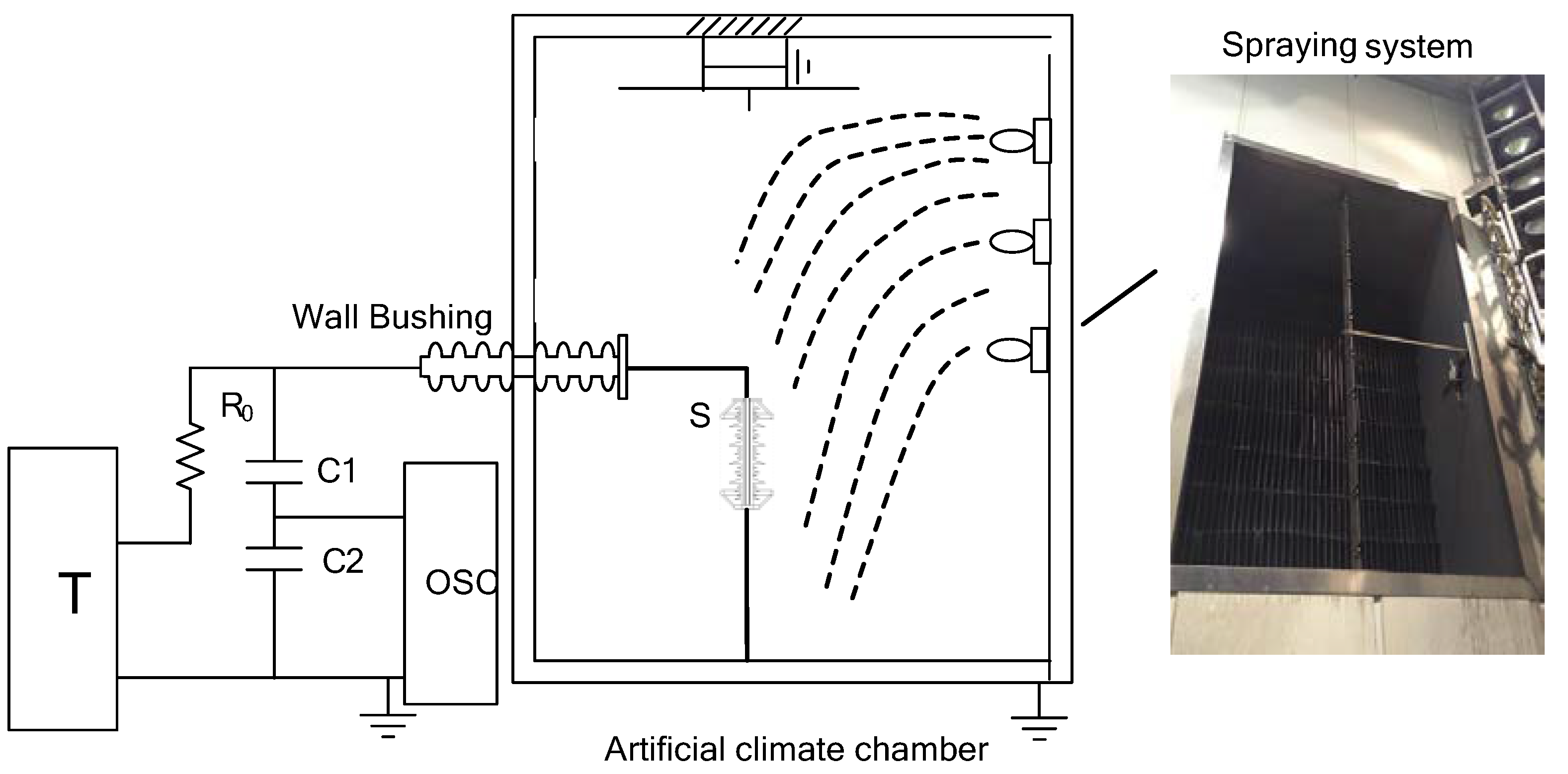
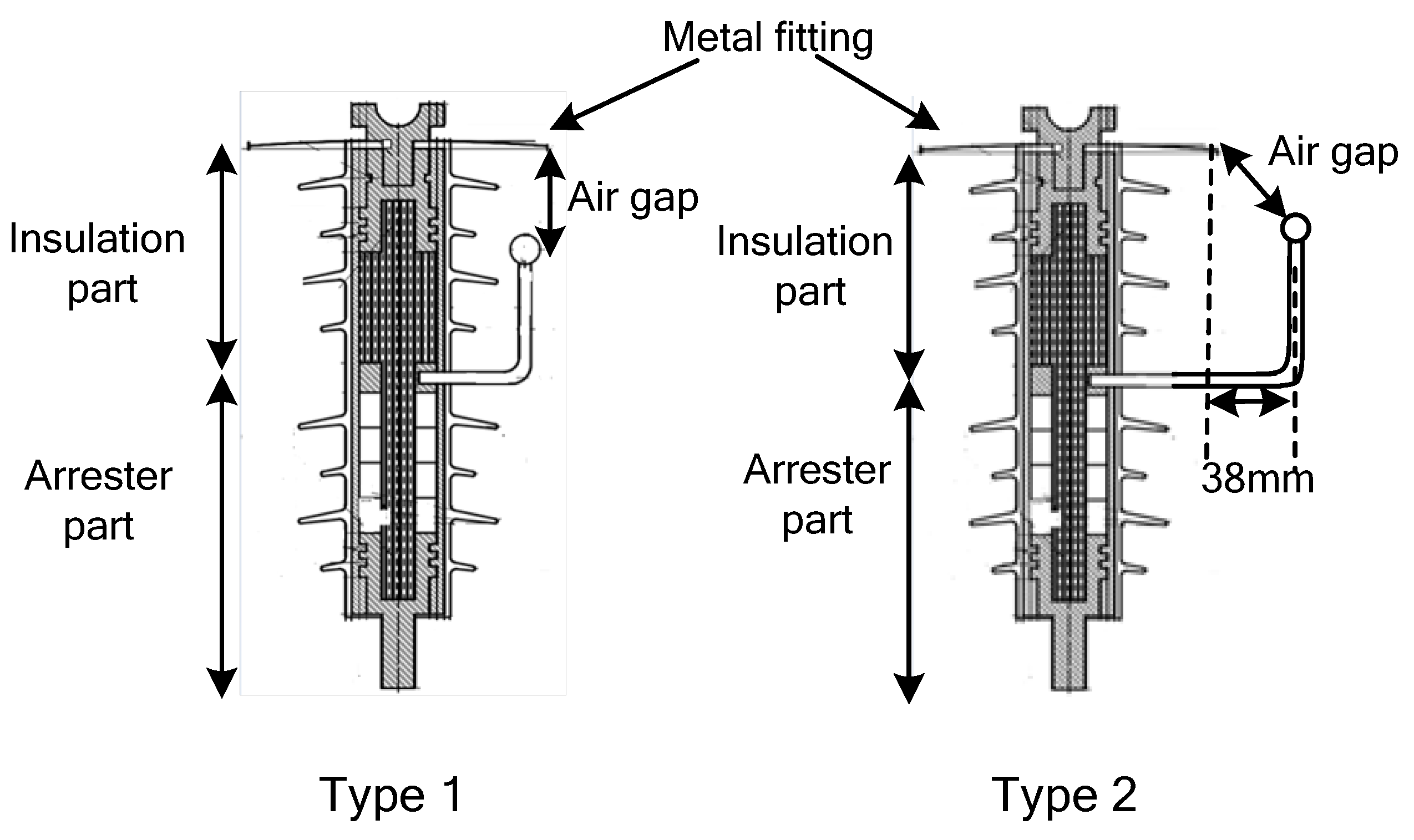
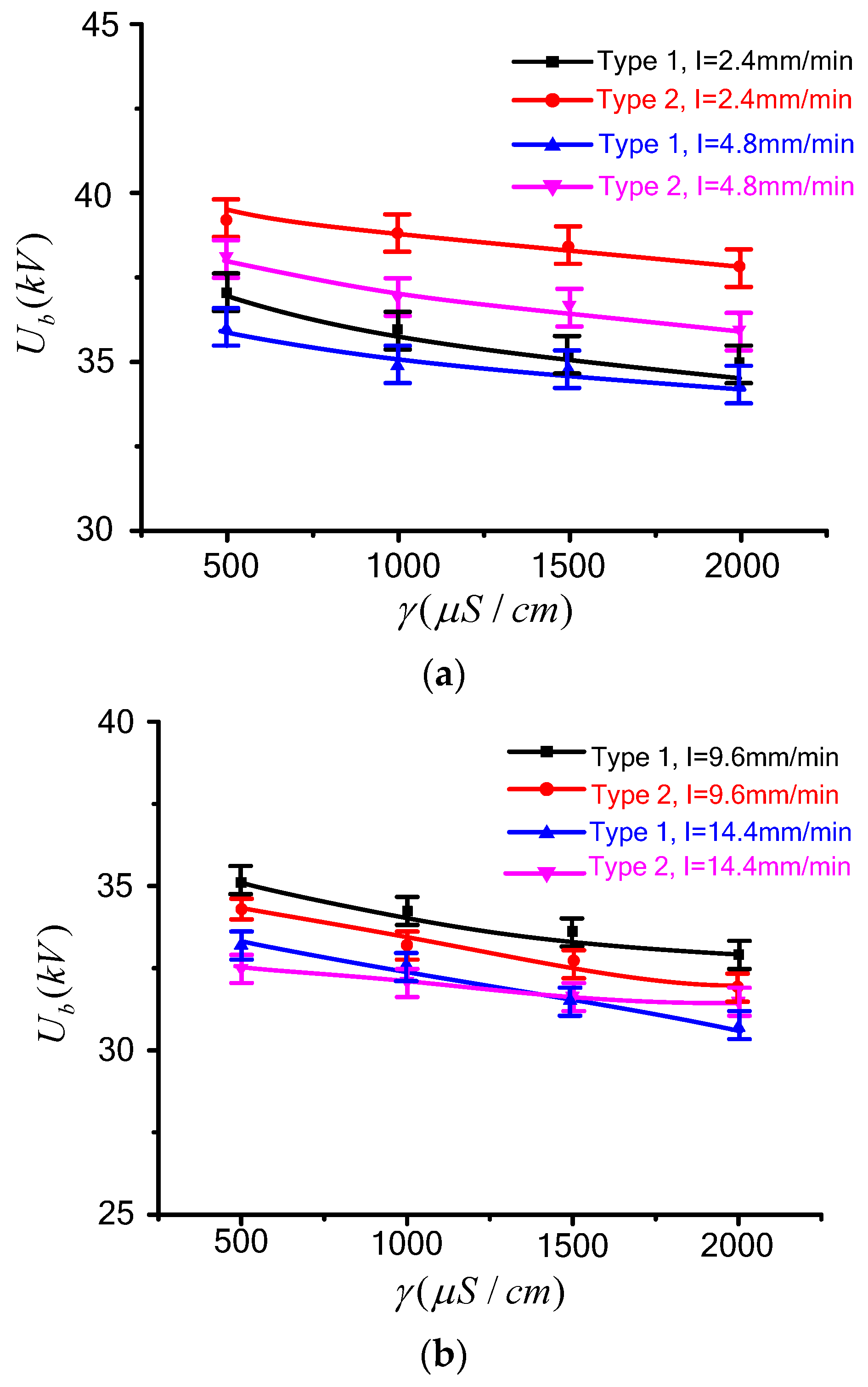
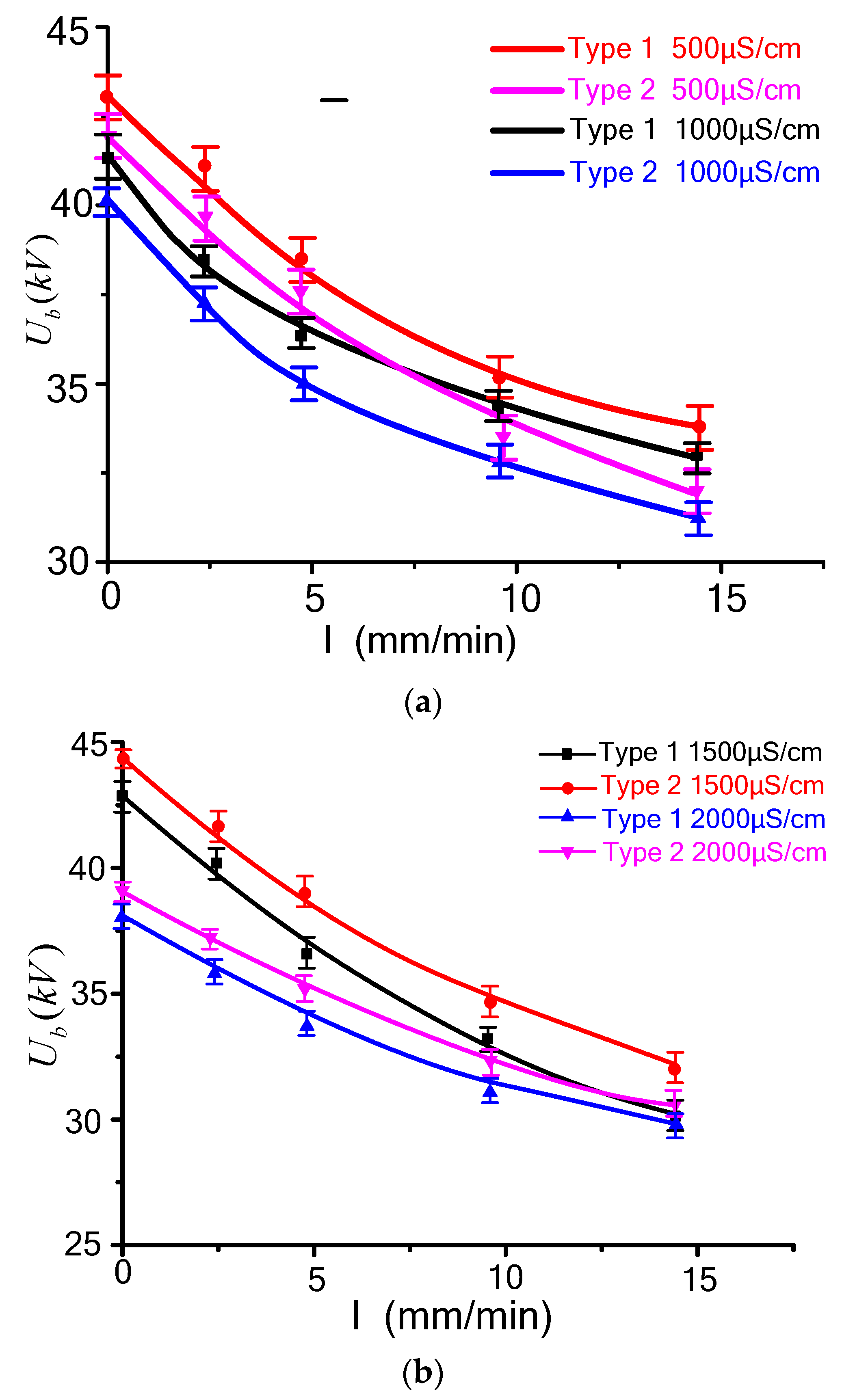

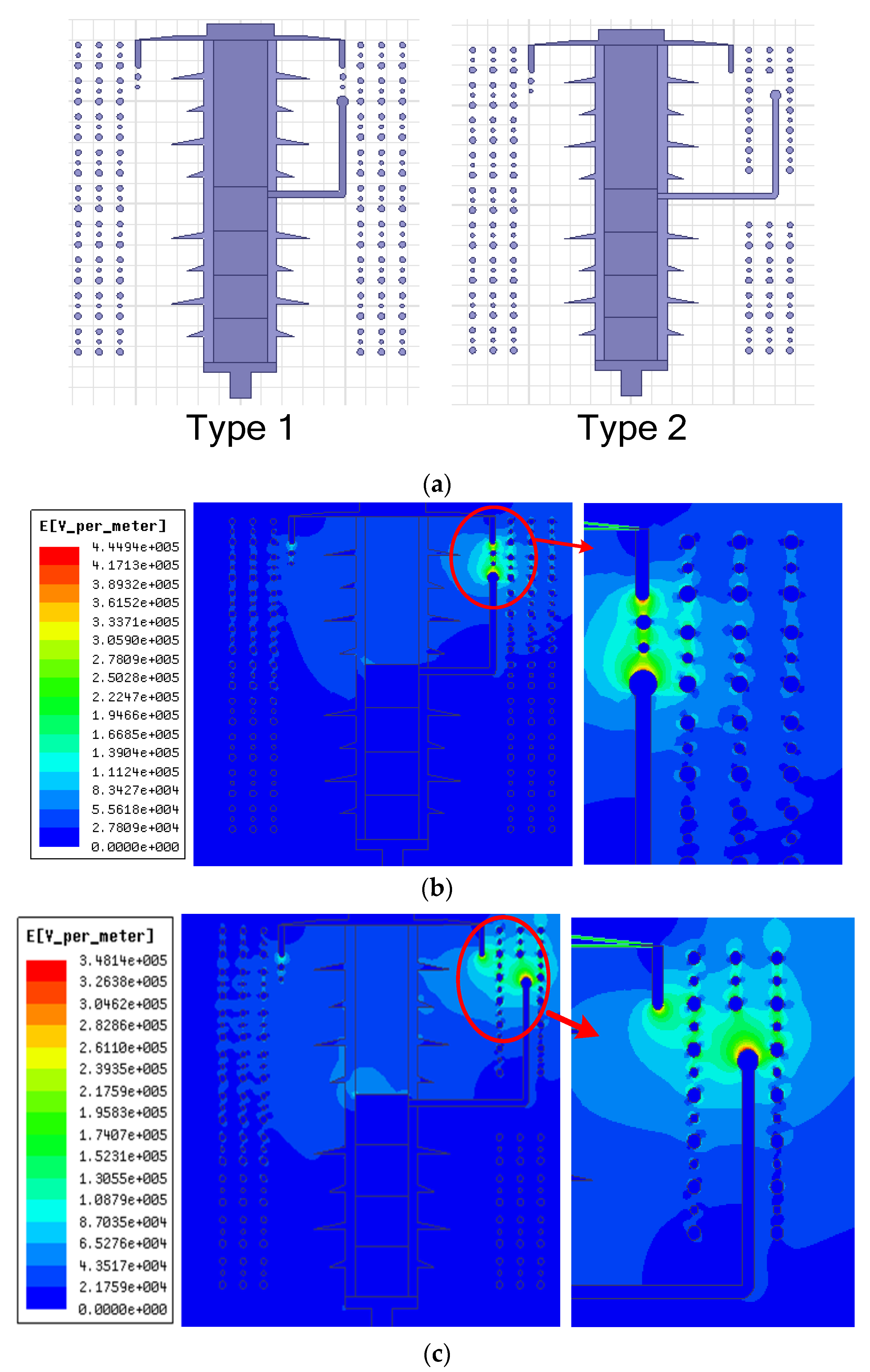
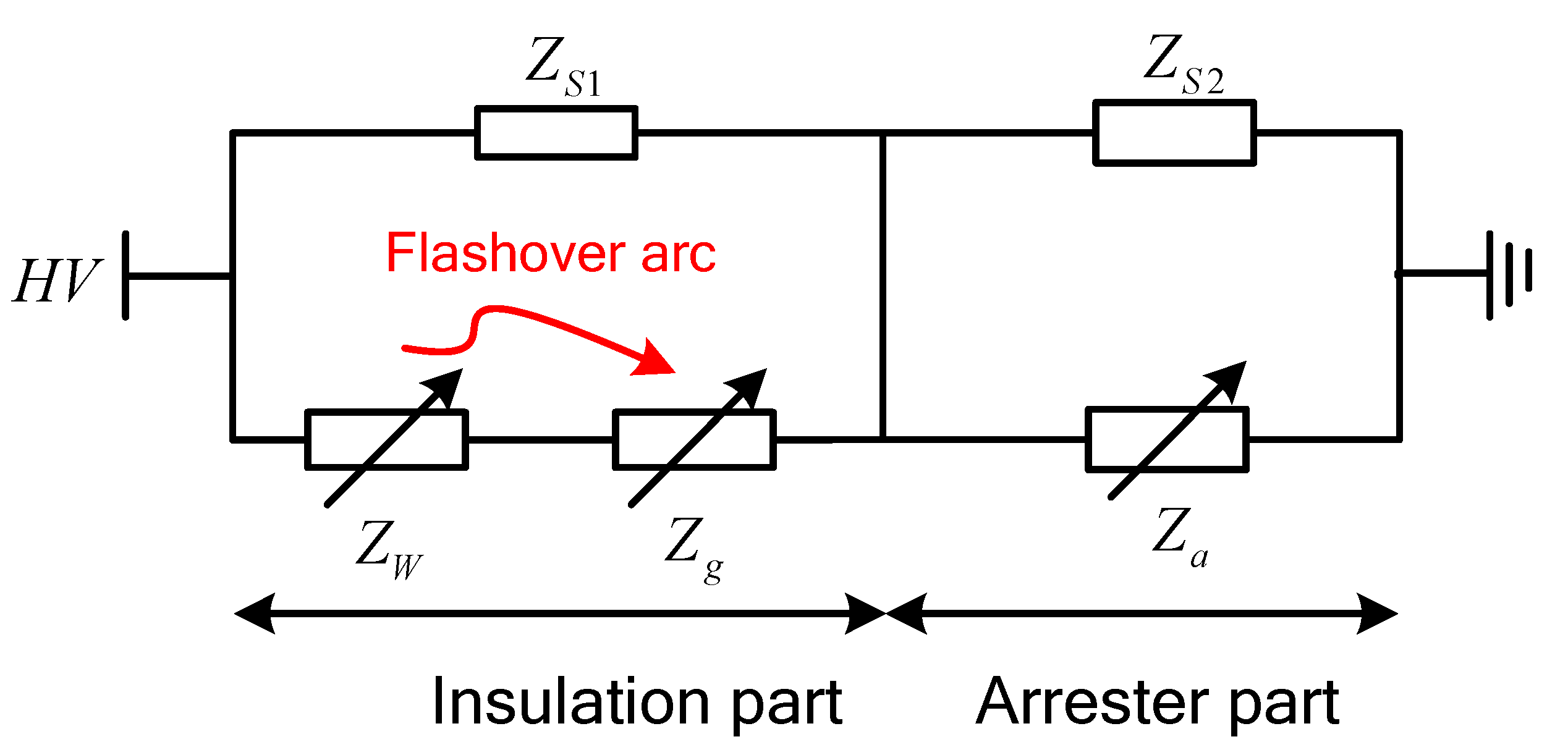

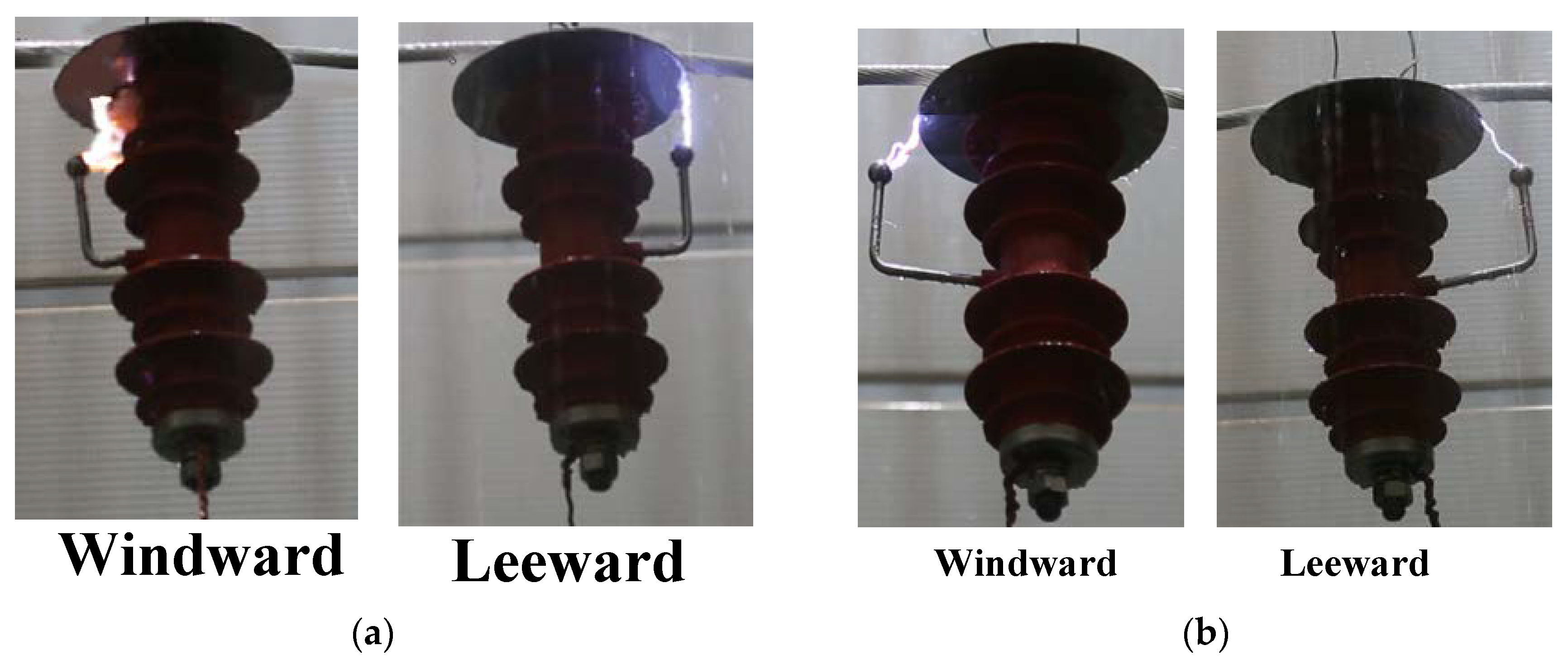

© 2018 by the authors. Licensee MDPI, Basel, Switzerland. This article is an open access article distributed under the terms and conditions of the Creative Commons Attribution (CC BY) license (http://creativecommons.org/licenses/by/4.0/).
Share and Cite
Lu, J.; Xie, P.; Hu, J.; Jiang, Z.; Fang, Z. AC Flashover Performance of 10 kV Rod-Plane Air-Gapped Arresters under Rain Conditions. Energies 2018, 11, 1563. https://doi.org/10.3390/en11061563
Lu J, Xie P, Hu J, Jiang Z, Fang Z. AC Flashover Performance of 10 kV Rod-Plane Air-Gapped Arresters under Rain Conditions. Energies. 2018; 11(6):1563. https://doi.org/10.3390/en11061563
Chicago/Turabian StyleLu, Jiazheng, Pengkang Xie, Jianping Hu, Zhenglong Jiang, and Zhen Fang. 2018. "AC Flashover Performance of 10 kV Rod-Plane Air-Gapped Arresters under Rain Conditions" Energies 11, no. 6: 1563. https://doi.org/10.3390/en11061563




